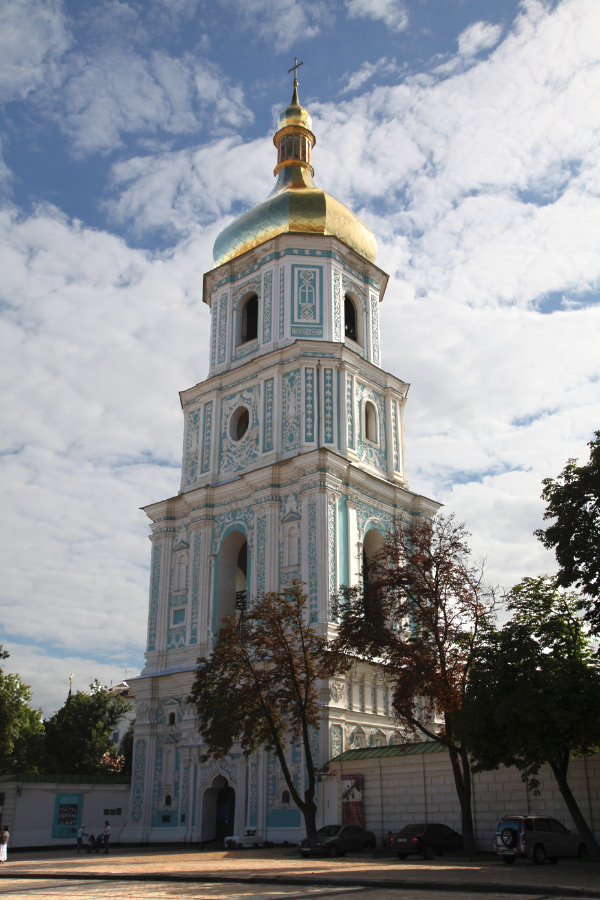 |
|
|
Собор Святої Софії – Cathedral of Saint Sophia – Собор Святой Софии
Built over the decades from 1011 (1037 was previously thought) and named for the 6th century
Cathedral of Holy Wisdom – Hagia Sophia in Constantinople, from which Orthodox-Catholic Christianity had been transmitted to Kyivan Rus' scarcely two decades earlier, in 988, this Дзвіниця – bell tower – Колокольня dates to the 18th century. |
|
|
Головна мета цього веб-сайту – надати та розповсюдити інформацію про фільм «Об’єднане Європейське Християнство – Прийшов час зцілити Схизму». Головні завдання цього фільму є послідовними: внесок у воз’єднання Православно-Католицької Церкви та створення, або, точніше кажучи, відтворення єдності та цивілізаційної соборності християнських народів починаючи з Європейського Християнства. Цей фільм містить послання до громади віруючих християн. Необхідно зазначити, що «Об’єднане Європейське Християнство – Прийшов час зцілити Схизму» - це скоріше два різних фільми, аніж дві частини єдиного цілого, оскільки теми, що розглядаються, є відокремленими одна від одної. Перша тема – Європейське Християнство – має велике значення. Друга тема – Церква – ще важливіша. Не дивуйтеся наявності у фільмах видимих протиріч у розумінні того, як громада віруючих християн повинна сприймати два цих тематичні блоки.
Перша частина – давайте будемо вважати її першим фільмом – розповідає про теологічний, екклезіологічний та інші аспекти церковної схизми V ст. Мова також піде про Велику Церковну Схизму, яка офіційно датується 1054 р., але насправді тривала з IX по XIII століття і надалі. Виходячи з представлених у фільмі фактів та їхньої ролі у боротьбі за розуміння намірів Божих стосовно Його Церкви, до полеміки не можна ставитись несерйозно. Розуміння спрямованої на об’єднання Заповіді Божої, знайомої всім християнам та відображеної у тексті Святого Письма, яке наявне на цьому веб-сайті, свідчить про те, що суперечка навряд є нерозв'язуваною.
Сучасні реалії, так само як і праці видатних мислителів в цій області та співпраця в рамках програм вищої церковної ієрархії говорить про те, що фактична консолідація можлива між традиційними Церквами, які зберегли Таїнства – перш за все Євхаристію – Апостольську спадкоємність та духовенство, представники якого отримують духовний сан в усталеному порядку. У порядку збільшення за кількістю віруючих у громадах представлені:
1. Давньосхідні Православні Церкви
2. Православні Церкви, які знаходяться у співпричасті із Конастантинопольським Вселенським патріархатом
3. Католицька Церква
До цього узгодженого списку автор фільму дозволить собі додати четверту группу. Поки Православні та Католицька Церкви офіційно намагаються мати справу з Церквами цієї групи, фактично не маючи з ними справ та ігноруючи їхнє існування, цією четвертою группою можна позначити Православні Церкви Візантійсько-Слов'янської літургічної традиції, які не знаходяться у співпричасті із Конастантинопольським Вселенським патріархатом. Українська Православна Церква та Київський патріархат – найбільша з великої кількості Церков, які опинилися заручниками цієї екклезіологічної плутанини.
Хоча протестанти є дуже важливими для християнського світу, поява протестантизму та його численних відгалужень у Західній Церкві (за деякими виключеннями) починаючи з XVI ст. не є тематичною частиною першого фільму. Про це йдеться у другому фільмі, який залучає глядача до цивілізаційного аналізу, скільки коштувала християнам відсутність єдності. Фільм присвячений дослідженням ряду конкретних прикладів Схизми. Матеріали всього фільму спонукають до роздумів, яке майбутнє в умовах Схизми очікує весь християнський світ починаючи з Європейського Християнства? Як, на вашу думку, ми діємо? Чи йдемо правильним шляхом?
Тільки від єдності віруючих залежить, чи зможе Церква воз’єднатись, або ж цього не станеться. Церковні ієрархи уже окреслили свою позицію. Вони не готові підписати спільну декларацію, Апостольську Конституцію чи який-небудь інший документ, який засвідчить воз’єднання та Cпівпричастя, але якби вони виявили свою згоду на цей крок, за відсутністю підтримки віруючих християн декларація не стане чинною, як це сталося 1439 р…. і найвеличніша в історії християнства Церква перетворилася на Мечеть. |
| |
|
|
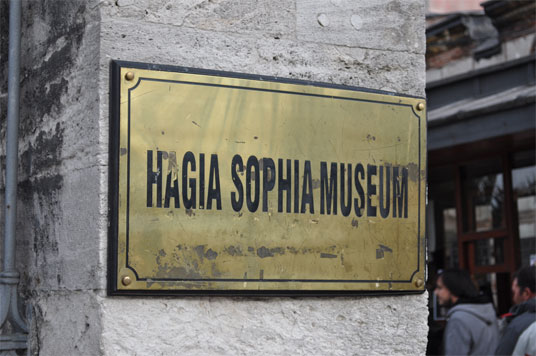 |
|
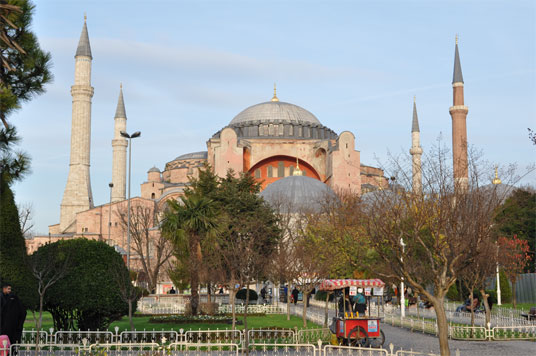 |
| |
|
|
Вирішувати вам. Вы жадаєте об’єднання?
Будь ласка, ще раз обдумайте це питання після перегляду фільму. |
| |
|
|
«Роз'єднання відкрито суперечить волі Христа, забезпечує камінь спотикання для всього світу та шкодить найсвятішому джерелу проголошення добрих новин для кожного створіння… Вірити в Христа – це означає прагнути воз’єднання, прагнення воз’єднання є наближенням до Церкви, наближення до Церкви є не що інше, як бажання долучитися до благодаті, яка відповідає плану Творця на віки вічні. Таким є зміст молитви Христової 'Ut unum sint.'»
Папа Іван Павло ІІ, «Енцикліка», 1995 р.
«Стіни, що розділяють нас, не дотягнуться до небес.»
Платон, митрополит Київський |
|
| |
|
|
| Чоловік мислить |
|
а Бог радить |
| |
|
|
| |
|
|
| |
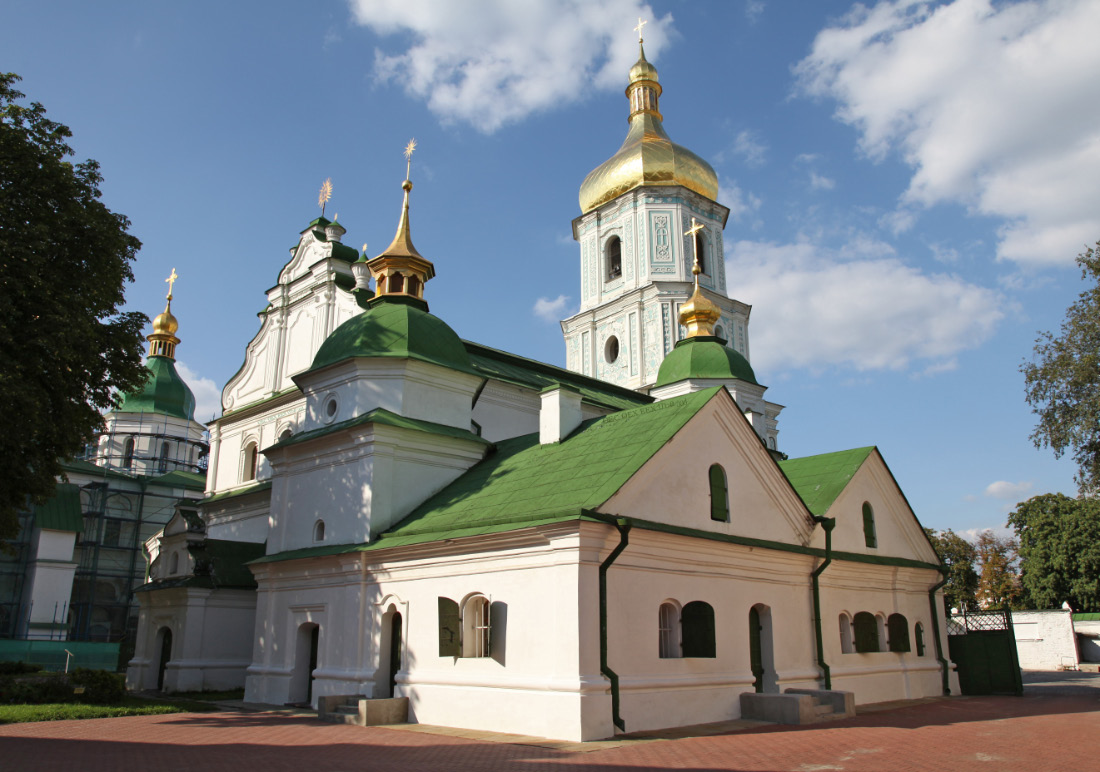 |
|
| |
Built in the decades from 1011 Anno Domini, Собор Святої Софії – Cathedral of Saint Sophia – Собор Святой Софии, Holy Wisdom in Holy Kyivan Rus' |
|
|
Патріарший кафедральний собор св. Володимира – Saint Volodymyr's Cathedral in Kyiv |
|
| |
|
|
| |
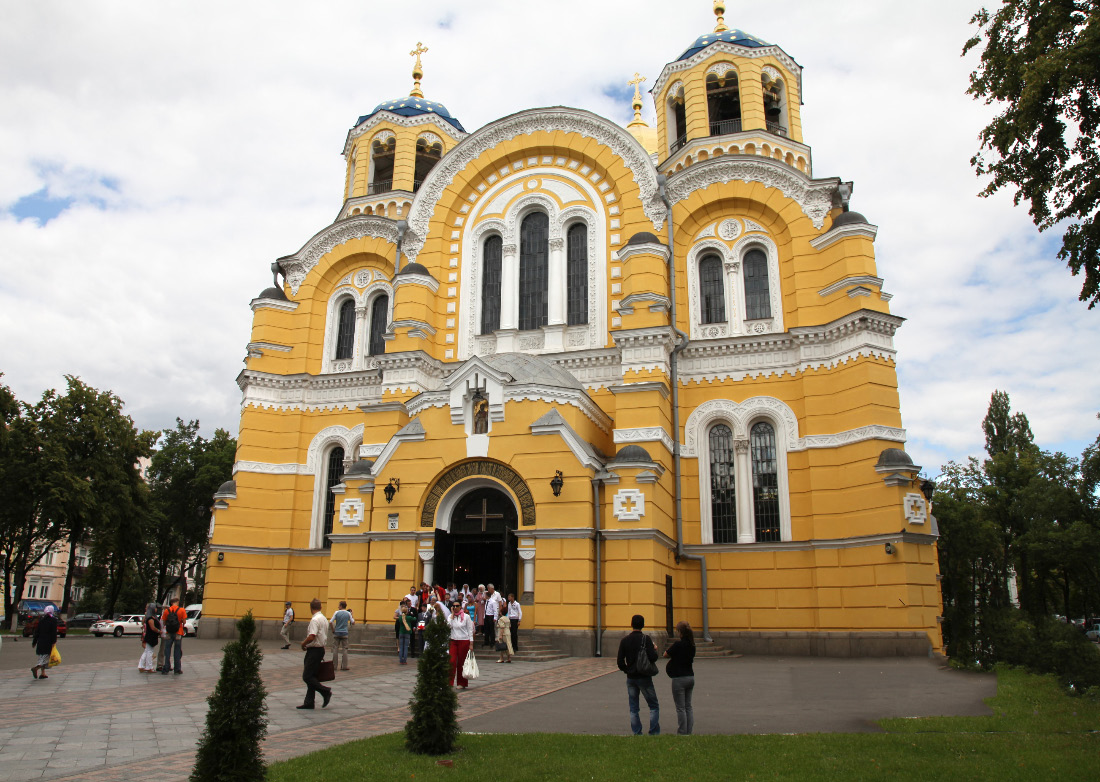 |
|
| |
|
|
| |
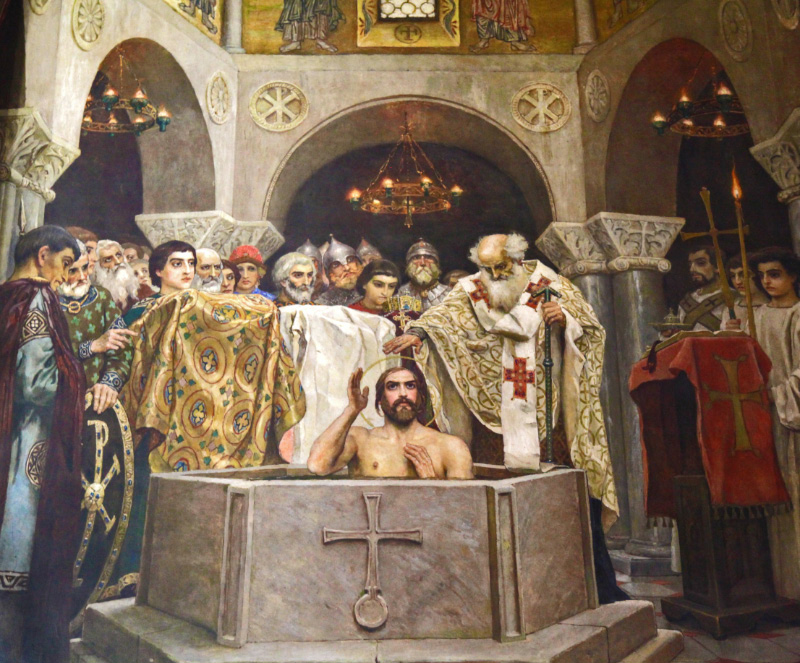 |
|
| |
While Christianity came to Київська Русь – Kyivan Rus' much earlier, indeed there is a tradition at the Apostle Andrew traveled as far as Kiev, and in an encyclical letter in 867 Patriarch Photius of Constantinople wrote of Christianity having been received by the Russians enthusiastically after the Bulgarians were converted in 863, the Baptism of Kievan Rus' — a monumentous event in European Christendom — is ususally dated to 988 with the baptism of Grand Prince Saint Volodymyr - Vladimir in Corson – Корсунь in Chersonesos, today a region of Sevastopol on the Crimean Peninsula, followed by mass baptisms in Kiev on the Dnieper river. As with most people of European Christendom though, it was a women ruler who was first baptized. With Kievan Rus it was first Saint Vladimir's grandmother, Saint Olga, who became a Christian, certainly by 957 and perhaps as early as 945.
Крещение Руси – Baptism of Rus', fresco by В.М. Васнецов – Viktor Vasnetsov,
in the Патріарший кафедральний собор св. Володимира – Saint Volodymyr's Cathedral in Kyiv,
which is the Patriarchial Cathedral of the Ukrainian Orthodox Church of the Kyivan Patriarchate,
the seat of one of the three major Ukrainian Orthodox Churches, divided from each other, and bearing one another little affection:
- Українська Православна Церква Київського Патрiархату (УПЦ-КП)– the Ukrainian Orthodox Church of the Kyivan Patriarchate (UOCKP);
- Українська Православна Церква Московського Патріархату (УПЦ МП) – the Ukrainian Orthodox Church (Moscow Patriarchate) (UOC-MP); and
- Українська Автокефальна Православна Церква (УАПЦ) – the Ukrainian Autocephalous Orthodox Church (UAOC).
In some times and places such divisions are called schisms.
Of course there are Protestants, as elsewhere of countless kinds and descriptions, and Muslims and Jews in the Ukraine.
And even among those claiming allegiance to Orthodoxy, there are smaller groups including Old-Ritualists, ROCOR and the UAOC-C
(Ukrainian Autocephalous Orthodox Church Canonical – Українська автокефальна православна церква канонічна (УАПЦ-К).
Latin Rite Catholics constitute perhaps as many as one percent of the population of the Ukraine, though descendants of Poles and other Catholics
would not usually look on the person of Saint Vladimir or the date of 988 as holding the same significance as do the Big O Orthodox.
The same is not true of the Ukrainian Greek Catholic Church (UGCC) – Українська Греко-Католицька Церква (УГКЦ).
in Full Communion with Rome and the Pope since the Union of Brest of 1595/1596, the Greco-Catholics count Saint Volodymr as their own. |
|
| |
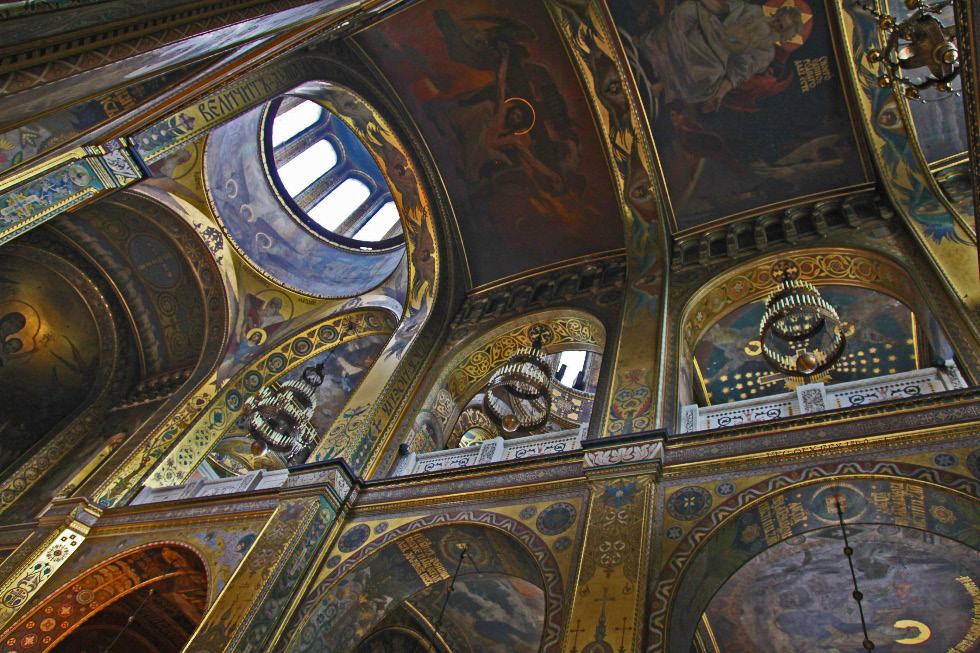 |
|
| |
... interior valted ceiling of Патріарший кафедральний собор св. Володимира – Saint Volodymyr's Cathedral in Kyiv |
|
|
|
|
| |
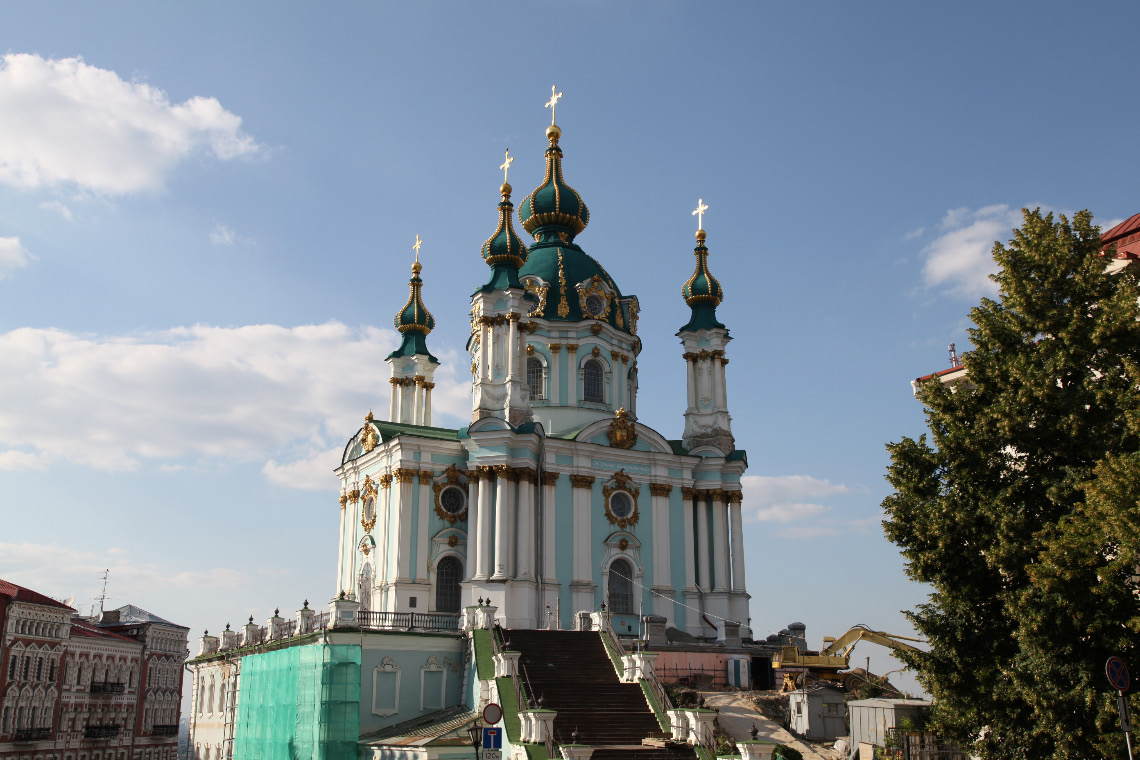 |
|
| |
Андріївська Церква – Saint Andrew's Church |
|
| |
Located on the very spot overlooking (though still some few hundred meters from) the Дніпро – Dnieper River where, according to tradition — the Primary Chronicle – the Tale of Bygone Years – Повѣсть времѧньныхъ лѣтъ – also know as the Nestorian Chronicle — Apostle Saint Andrew erected a cross and predicted a future great Christian city would be built. This glorious XVIII century Church stands now as the most important Church of the Українська Автокефальна Православна Церква (УАПЦ) – the Ukrainian Autocephalous Orthodox Church (UAOC). Built from 1744 through 1767, the work was lead by that most famous of Catholic Italian architects adopted by Russia, Франческо Бартоломео Растрелли – Francesco Bartolomeo Rastrelli (* 1700 Firenze – San Pietroburgo, 29 aprile 1771 †) and also by Ivan Fyodorovich Michurin – Иван Фёдорович Мичурин and many skilled workers of European Christendom. |
|
| |
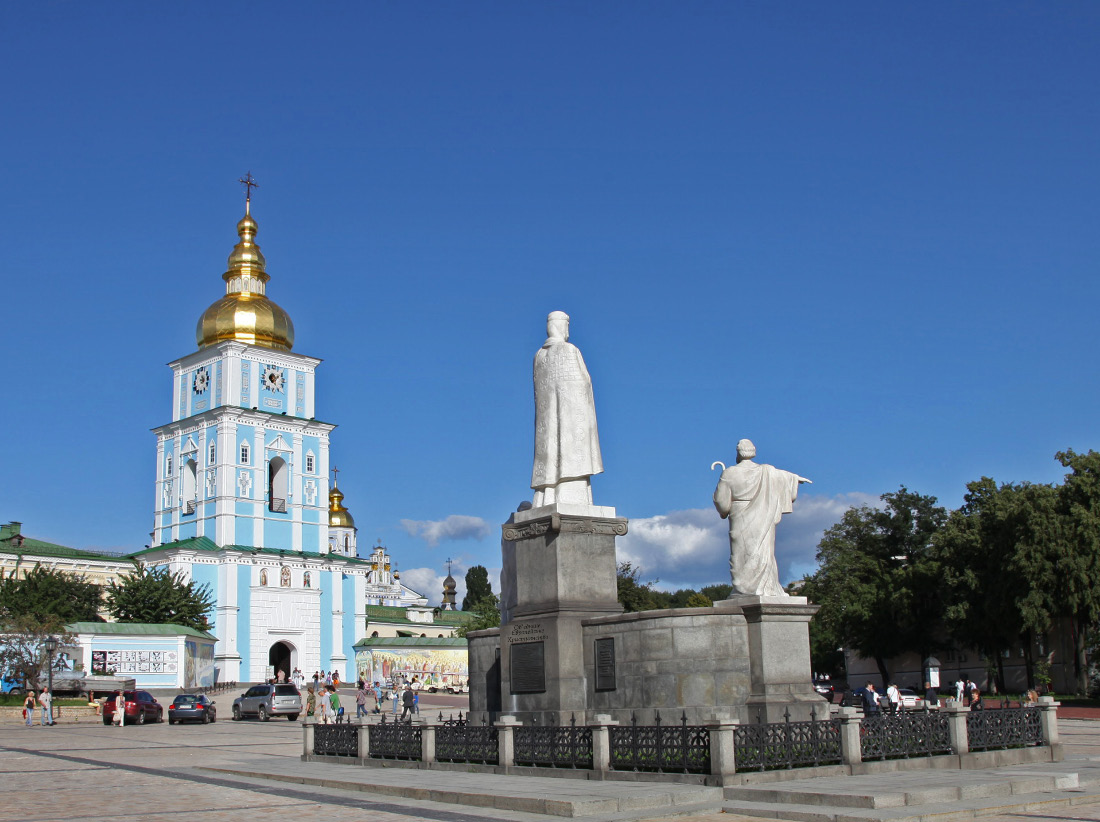 |
|
| |
|
|
| |
On Михайлівська Площа – Mykhailivska Square in central Kyiv, two of the monumental Ukrainian victims of the Bolshevik Soviet 1930's: the Памятник княгині Ользі – Monument to Princess Olga and the Михайлівський Золотоверхий Собор і Монастир – Saint Michael's Golden-Domed Cathedral and Monastery, both rebuilt in the 1990's. The Olga monument is in fact a sculpture group which includes Apostle Saint Andrew to Olga's right, and to her left those most extraordinary brothers from Θεσσαλονίκη – Thessaloniki, Saints Cyril and Methodius. |
|
|
|
|
| |
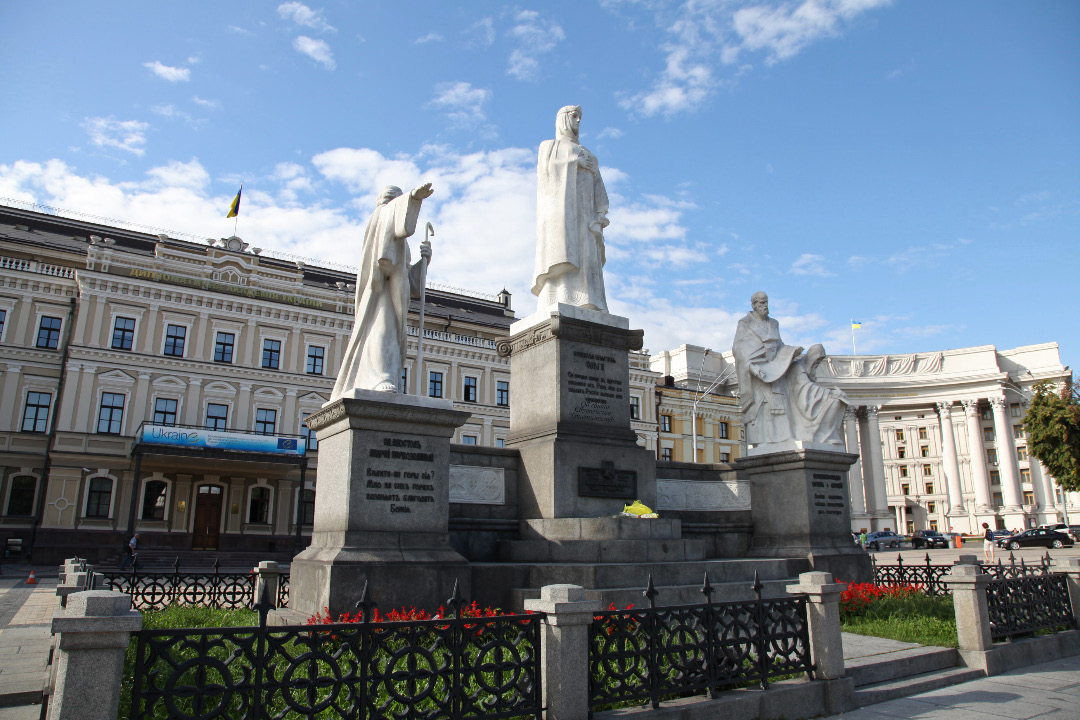 |
|
| |
Built in 1911 of concrete. Rebuilt in 1996 of marble. |
|
| |
|
Wiara Nadzieja Miłość |
| |
|
Faith Hope Love |
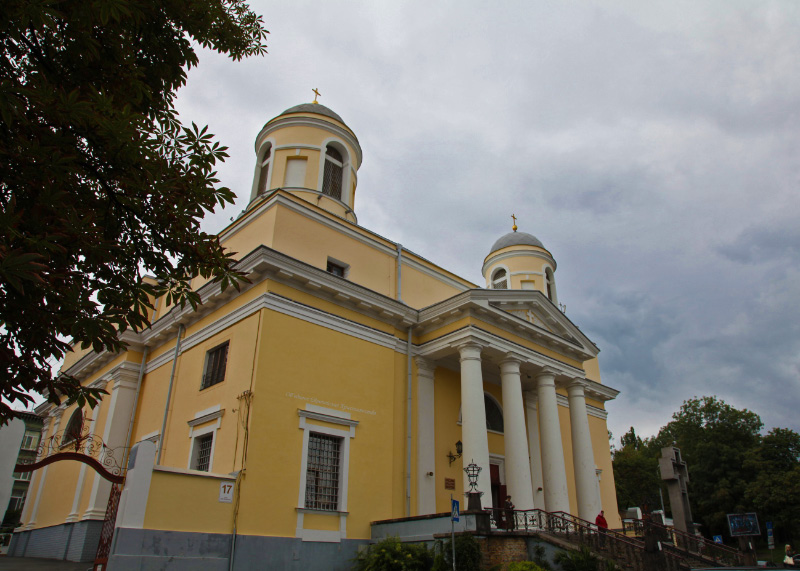
|
|
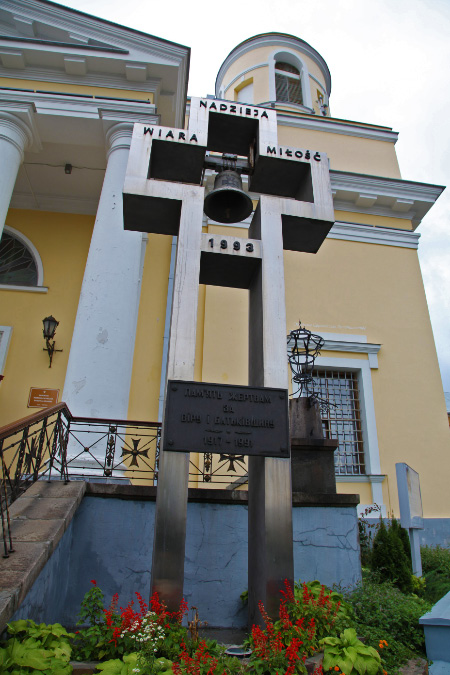 |
Святий Олександр собор в Києві – Saint Alexander Cathedral in Kyiv – Katedra św Aleksandra w Kijowie
Латинському обряді католицьке – Latin Rite Catholic – Katolicki obrządku łacińskiego |
|
Пам’ять Жертвам
за
Віру і Батьківщину
1917 – 1991 |
To the Memory of the Victims
for
Faith and Fatherland
1917 – 1991 |
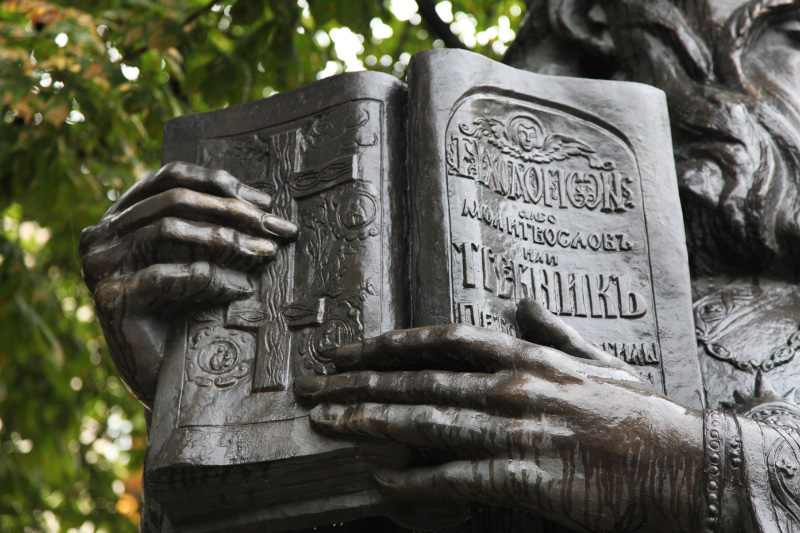 |
|
|
Петро Могила, Митрополит Київський, Галицький і всієї Русі – Petro Mohyla – Petru Movilă – Петр Могила – Piotr Mohyła
Metropolitan of Kiev, Halych and All-Rus' (и всея Руси) from 1633 until his death; canonized in 1996.
* 31 December 1597 O.S. (10 January 1597 N.S.) in Suceava, Principality of Moldavia, now in Romania -
1 January 1647 O.S (11 January 1647 N.S.) in Київ – Kyiv – Kiev – Киев – Kijów – Кіеў – Kijevas †,
then part of Poland when Poland was, as Poland had been since the Treaty of Lublin of 1 July 1569,
part of the unified state of the Polish–Lithuanian Commonwealth. (Old Style and New Style dates being of particular
significance in this period, as the so-called Gregorian Calendar was introduced by the fiat of Pope Gregory XIII in 1582.)
Monument is in the grounds of the Kiev Monastery of the Caves – Києво-Печерська Лавра – Киево-Печерская Лавра |
|
|
| |
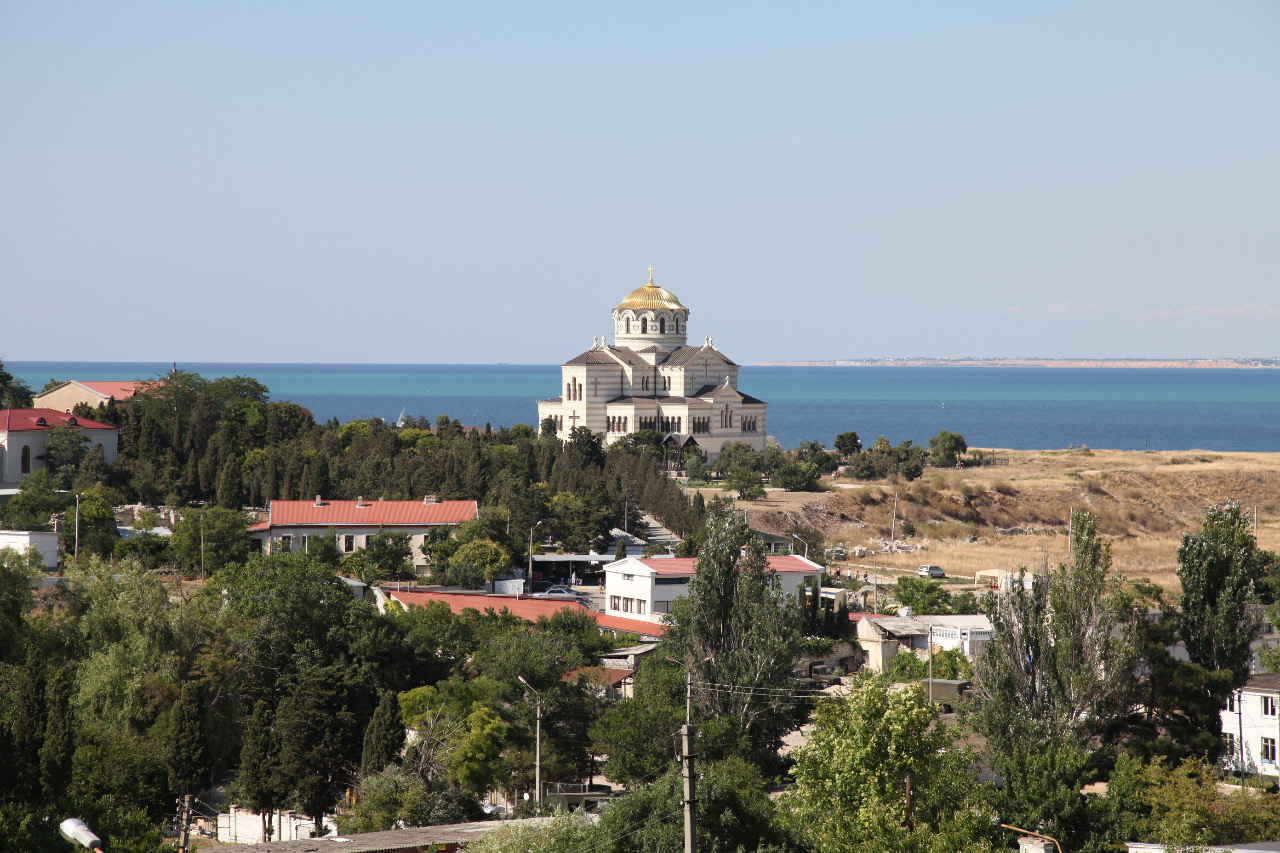 |
|
| |
Кримський Півострів – the Crimean Peninsula – Крымский Полуостров |
|
| |
Should this territory be under the sovereignty of Russia or the Ukraine? The present writer really does not know. On this first day of August in 2011 it was Ukrainian, and it does somehow seem connected to their land. And then there is the whole saga of Bolshevism, the Russian Civil War, forced collectivization of farms and the Holodomor, and if the atheist Revolutionary Jews are in first place on the hierarchy of guilt and blameworthiness for all of that, who is in second place, the Russian or the Ukrainian, and does it still matter in 2016? One thing must be clear to us all though. Whoever is guilty of the fratricidal Russian-Ukrainian XXI century war, be s/he American Neo-Con Jew, American "Liberal" Jew, Russian Клептократ-Kleptocrat or some home-grown corrupt plutocrat of the failed state of the Ukraine, such people are presently Hell-bound, and they better think on repentance and restitution in a hurry. And at all events, the Crimean Peninsula is one of the constituent territories of Європейське Християнство – European Christendom – Европейское Христианство. Perhaps all of our citizens and members who have failed to contribute where they could to making a reality of Об’єднане Європейське Християнство – United European Christendom – Объединённое Европейское Христианство can go ahead and count themselves as co-guilty for our present troubles. |
|
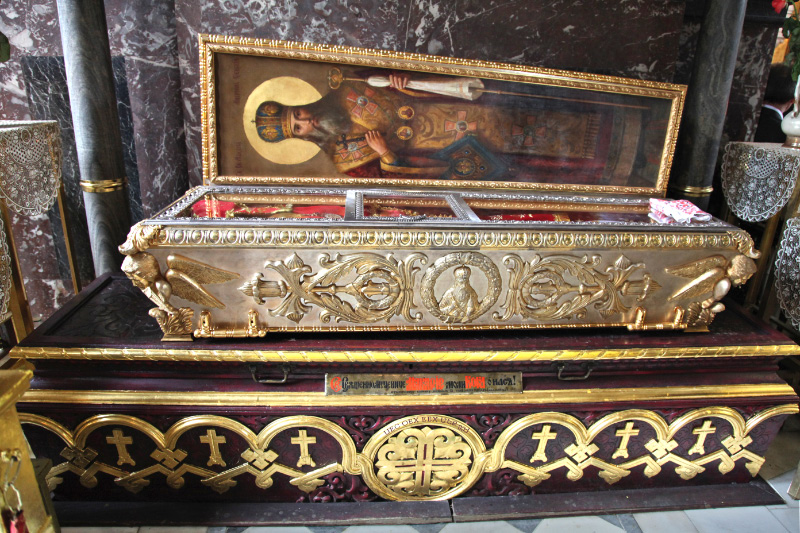 |
|
| Holy Hieromartyr Saint Macarius was Metropolitan of Kyiv in 1497. While serving the Divine Liturgy the Tatars attacked his Church. He refused to leave the Altar, and was martyred in front of it, murdered by the Muslims. His feast day is 1/14 May. |
|
|
|
|
|
| |
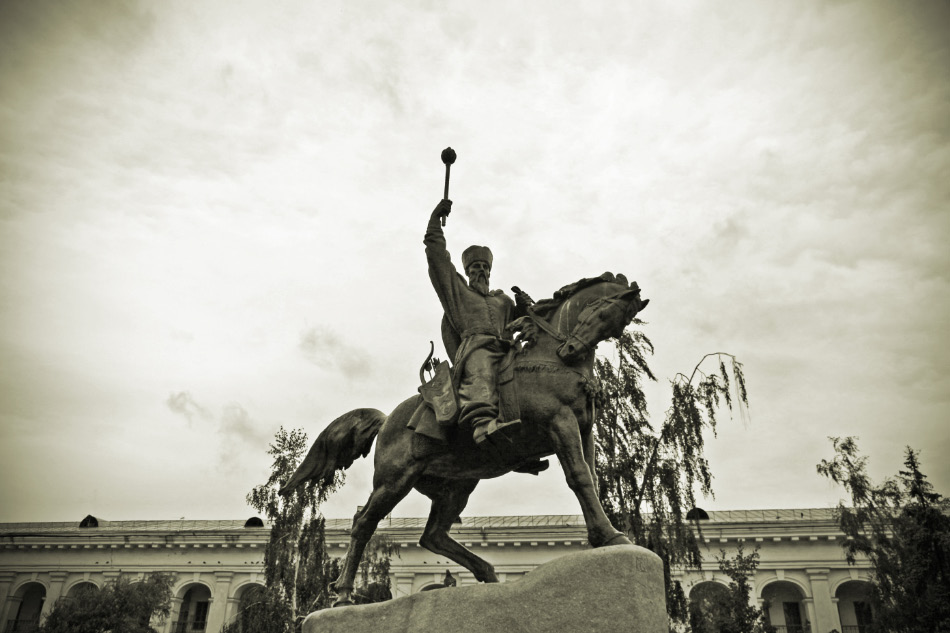 |
|
| |
Петро Конашевич-Сагайдачний – Petro Konashevych-Sahaidachnyi – Piotr Konaszewicz-Sahajdaczny – Пётр Конаше́вич-Сагайда́чный
(* c. 1582 in Kulchytsy – 20 March 1622 in Kyiv †) Konashevych-Sahaidachnyi was Hetman of the Ukrainian Zaporozhian Cossacks from 1616–1622.
One of the more controversial men featured on these pages, as he and his men sided with the Catholics of the Polish-Lithuanian Commonwealth
in their invasion of Moscovy in 1618, though he later repented of the ugly excesses of the Cossacks he commanded, if excesses
is a word which can be used in a description of a war which never should have occurred, and which might not have occurred if the
Catholic Church and the Orthodox Churches were united as the Orthodox-Catholic Church as they should be. Still we will remember here
his and his men's heroic struggles, on land and sea, against the aggressions of the Muslim Crimean Tatars and the Muslim Turks
and their murderous and rape-filled trade in enslaved captured Christians. Part of this struggle within the Anti-Turkish Holy League
of the Polish-Lithuanian Commonwealth and the Cossacks was the monumental Battle of Khotyn (Chocim) – Битва під Хотином
(2 September 1621 to 9 October 1621), in which c. 60,000 Christians forced c. 150,000 Muslim Turks to abandon their siege. |
|
|
|
|
| |
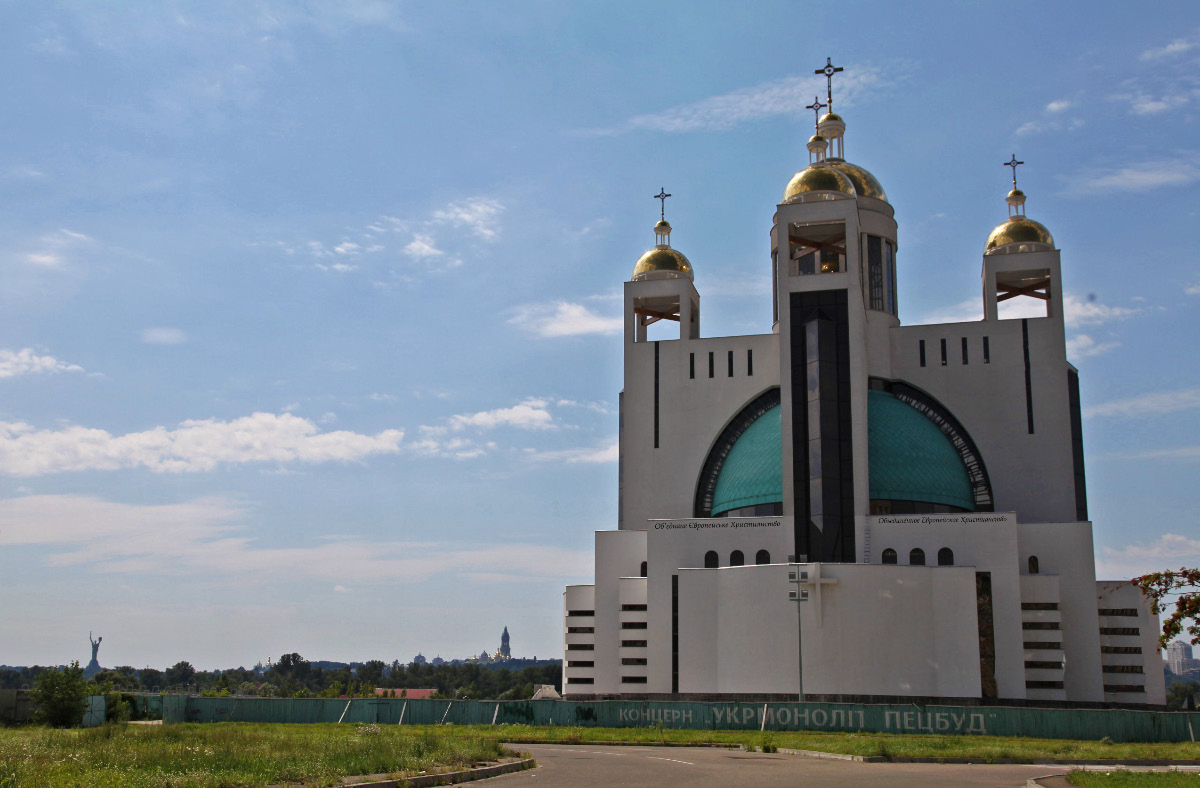 |
|
| |
Патріарший Собор Воскресіння Христового – Patriarchal Cathedral of the Resurrection of Christ – Патриарший Собор Воскресения Христова |
|
| |
English between Ukrainian and Russian to keep them from fighting? No, probably not a wise idea. The Patriarchal Church of the |
|
| |
Українська Греко-Католицька Церква (УГКЦ) – Украинская Грекокатолическая Церковь (УГКЦ) – Ukrainian Greek Catholic Church (UGCC) |
|
| |
is in Kyiv – Київ – Киев – Kiev, and not in Львів – Lviv – Львов – Lvov – Lwów – Lemberg – Leopolis. What is more, this Church was constructed on the Left Bank of the Eastern-Slav-uniting, or as the case may be dividing, Днепр – Дняпро – Дніпро – Dnieper River. As of this May 2016 writing, it is unclear whether the powers that be in the Church will choose to use the possibilities of |
|
| |
Об’єднане Європейське Християнство – Аб'яднанае Еўрапейскае Хрысціянства – Zjednoczone Europejskie Chrześcijaństwo – Объединённое Европейское Христианство |
|
| |
to help solve their many internecine problems, or whether pride and arrogance will carry the days and decades to come. For the Patriarchal Cathedral, cornerstone to consecration was 27 October 2002 to 18 August 2013, while this humble photograph is of 7 August 2011 vintage. This may seem like a long time to construct what is after all a modern building, but the prescience of the then leader of the UGCC, Любомир Кардинал Гузар – Lubomyr Cardinal Husar, decided that: |
|
| |
|
|
| |
«Ми маємо таку позицію, що не хочемо приймати пожертв від офіційних органів. Бо це завжди тягне за собою певну, так би мовити, „вдячність“. Ми хочемо бути Церквою свобідною, щоби пожертви не перешкодили нам сказати правду, коли її треба сказати»
|
|
| |
|
|
| |
"We have taken the position to decline to accept donations from official bodies. Doing so always entails a certain amount of, so to speak, 'gratitude.' We want to be a free Church, so that donations do not prevent us from telling the truth when and as it should be told."
|
|
| |
|
|
| |
Visible in this picture, if only barely, to the viewer's left of the UGCC Patriarchal Cathedral, and on the opposite, the west, the Right Bank of the Dnieper, is Велика Лаврська Дзвіниця – the Great Lavra Bell Tower of the Kyiv Monastery of the Caves, built 1731-1744 by German architect Йоган-Ґоттфрід Шедель – Gottfried Johann Schädel (1680-1752), and at 96.5 meters the then highest in the world.
Then, still further to the viewer's left it is possible to make out, again only barely, the ugly «Батьківщина-Мати» a 62-meter high (102 meters together with the pedestal) Communist потворність – monstrosity, meant to compete with the Monastery of the Caves, though happily the ugly (? woman's ?) sword was cut off to make this 1979-to-1981 vintage eyesore stand shorter than the Great Lavra Bell Tower. |
|
| |
|
|
|